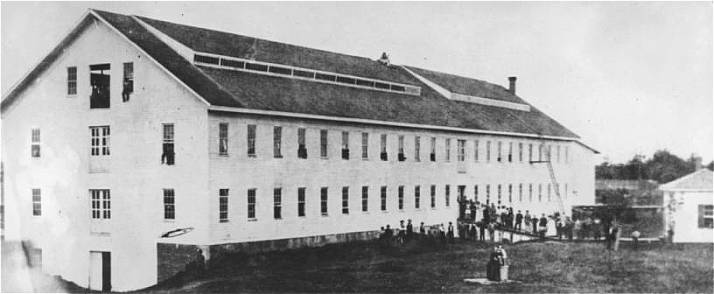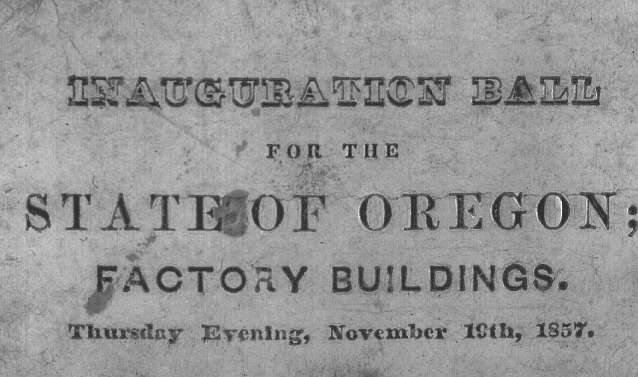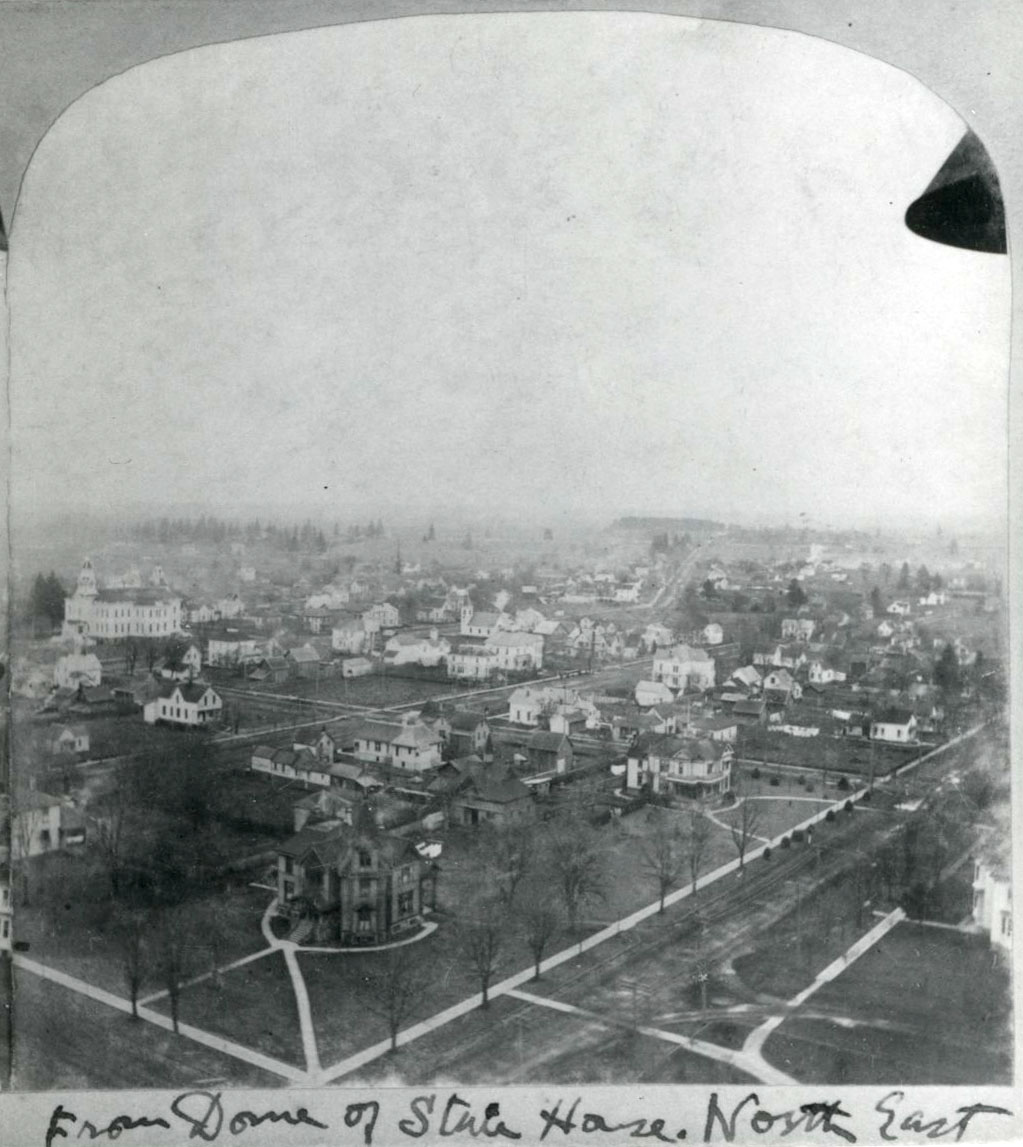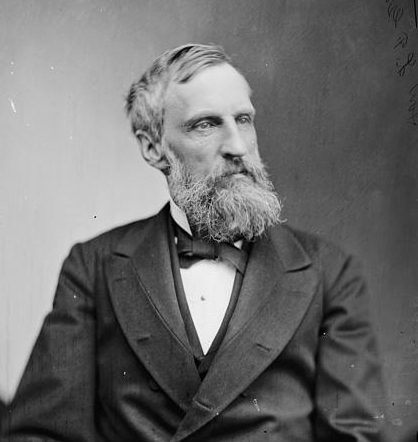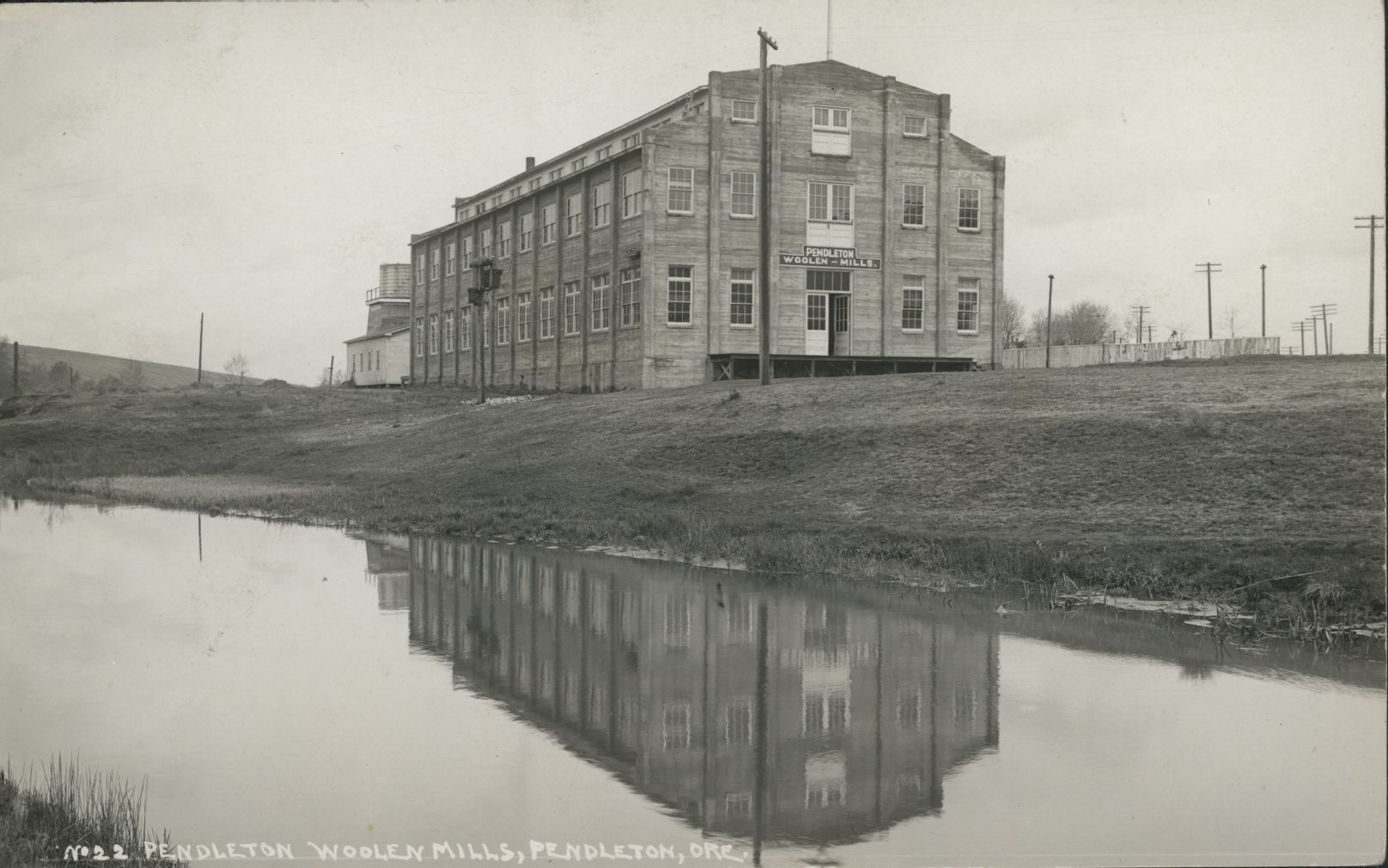The Willamette Woolen Mill (1857-1876) in Salem was among the first woolen mills established west of the Mississippi. In 1856, Joseph Watt, who brought 330 Merino sheep over the Oregon Trail in 1848, traveled to Salem to meet with A. H. Reynolds and Daniel Waldo to make plans for a joint stock company they called the Willamette Woolen Manufacturing Company. At the time of the mill’s incorporation, there were an estimated 50,000 head of sheep in Oregon producing about 300,000 pounds of wool a year.
Several towns vied to be the site of the mill, but Salem was chosen after it became the first community whose residents purchased $9,000 in company stock. The site for the mill was on Chemeketa Creek (now Mill Creek) north of Salem on property donated to the company by John Boon, a missionary who settled on the first Methodist mission site in Oregon. Because the flow in the creek to power the mill was not sufficient, especially in the dry season, a ditch had to be dug to divert water from the North Santiam River to Mill Creek northwest of present-day Stayton. While the ditch was being dug in 1855, William Henry Rector was delegated to travel to New England to purchase the needed machinery and to recruit an experienced superintendent to operate the mill. He succeeded in recruiting L. E. Pratt, who then assisted him in purchasing machinery from the firm of Davis & Furber.
In 1857, carpenter Joseph Watt supervised the construction of the mill, which was 190 feet long by 47 feet wide, with three stories and an attic. When the mill was completed in November, an “Inauguration Ball” dinner and dance were held to celebrate, attended by dignitaries and many out-of-towners. Afterwards, the machinery was installed, and the mill began operations the last week of December 1857.
Sales were slow in the first year of operations. The scarcity of money in Oregon Territory meant that much of the output of the mill had to be bartered for raw wool and mill supplies. But business began to pick up in 1859 when the Company exhibited at the California State Fair in Sacramento and established business relationships in California. In 1860, surplus wool was sold to a San Francisco company at a good profit, and the mill was producing $100,000 worth of cloth annually, which it sold to stores, mining camps, and to the Superintendent for Indian Affairs, who purchased blankets. Business was stimulated by the Civil War when the flow of southern cotton to northern mills was halted and woolen goods were in demand for soldiers.
The success of the mill may have motivated four Salem businessmen, including future Governor LaFayette Grover, to initiate what could be interpreted as a hostile takeover of the mill in January 1863. The men stealthily bought up company stock to obtain a controlling interest and, in a shareholders' meeting, voted themselves in as officers at what Pratt called “an exorbitant salary.” They then relieved Pratt of his superintendent duties and brought in a new superintendent.
The mill continued to operate successfully despite the end of Civil War contracts and the formation of the Oregon Wool Growers Association in 1865, which sought to establish better prices for raw wool, therefore raising production costs for mills. By 1866, the mill employed 100 workers who operated thirty-three looms producing 1,000 to 1,200 yards of cloth daily. According to the 1871 Salem City Directory, the mill was processing 400,000 pounds of wool annually and was “equal to any mill in the United States.”
All this came to an end on May 3, 1876. A little after midnight, a fire began in the attic. By the time the night watchman noticed the blaze, he was unable to sound the alarm because the rope to the alarm bell had burned, delaying the arrival of fire companies located three-quarters of a mile away. Once help arrived “the fire had gained terrific headway” according to the report in the Willamette Farmer. “The vast structure, built of combustible wood and dry as kindling, the floors saturated with oil, all the contents highly inflammable, soon became a roaring, crackling mass of flame, presenting a sight of most deplorable grandeur, such as the beholder can never forget.” The building and its machinery, valued at $125,000 ($3.7 million in 2025 dollars) were a total loss.
The cause of the fire was said to be “spontaneous combustion” which can happen with stored scraps and pieces of inferior sheepskin. Pratt, who was fired from his superintendent’s post in 1863, raised the possibility of arson in his memoirs as a motivation to deal with “mismanagement” and a company “burdened with debt and loss of credit.” The truth will probably never be known.
The Weekly Oregon Statesman report on the disaster was optimistic that “the value and character of the water power insures a rebuilding,” but that was not to be. The owner of the mill took the $75,000 insurance on the building and $7,500 on materials lost in the fire and walked away. It would be fourteen years before a new mill in Salem, the Thomas Kay Woolen Mill, began operations at a new site about a mile to the southeast powered by water from Mill Creek.
-
![]()
Willamette Woolen Manufacturing Company building in Salem, Oregon.
Courtesy Salem Public Library Historic Photographs Collection, Salem Public Library, Salem, Oregon, 873 -
![]()
Duplicate invoice from Willamette Woolen Manufacturing Co., March 16, 1860.
Oregon Historical Society Research Library, Digital Collections, Joel Palmer Papers, 1783-1982; Mss 114; b2;f23 -
![]()
Joseph Watt.
Oregon Historical Society Research Library, Photo File #1102
-
![]()
-
![]()
Invitation to inaugural ball for opening Willamette Woolen Manufacturing Company, Salem, Oregon, November 1857.
Courtesy Salem Public Library Historic Photographs Collection, Salem Public Library, Salem, Oregon, 896 -
![]()
"Salem Woolen Mills Destroyed By Fire," Weekly Oregon Statesman, May 5, 1876.
Courtesy Weekly Oregon Statesman, Newspapers.com
Related Entries
-
![City of Salem]()
City of Salem
Salem, the capital of Oregon, is located at a crossroads of trade and t…
-
![Joseph Watt (1817 - 1890)]()
Joseph Watt (1817 - 1890)
Joseph Watt, who settled in Yamhill County in 1848, helped wake up the …
-
![LaFayette Grover (1823-1911)]()
LaFayette Grover (1823-1911)
LaFayette Grover was politically one of the most successful Democrats i…
-
![Pendleton Woolen Mills]()
Pendleton Woolen Mills
Pendleton Woolen Mills opened in 1909 in a defunct woolen mill that had…
-
![Thomas Kay Woolen Mill]()
Thomas Kay Woolen Mill
Incorporated in 1889, the Thomas Kay Woolen Mill began manufacturing bl…
-
![William Henry Rector (1806-1890)]()
William Henry Rector (1806-1890)
William Henry Rector was an Oregon pioneer, builder, business innovator…
Related Historical Records
Map This on the Oregon History WayFinder
The Oregon History Wayfinder is an interactive map that identifies significant places, people, and events in Oregon history.
Further Reading
Lomax, Alfred L. Pioneer Woolen Mills in Oregon. Binfords & Mort, 1941.
Pratt, L. E. “The Origin and History of the Willamette Woolen Factory.” Oregon Historical Quarterly 3, no.3 (September 1902): 248.
“Salem Woolen Mills Destroyed by Fire.” Weekly Oregon Statesman. May 5, 1876, p. 6.
“Destruction of Salem Woolen Mills.” Willamette Farmer. May 5, 1876, p. 5.

